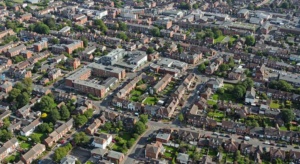What does the future hold for Help to Buy?
Governor of the Bank of England, Mark Carney, has issued a warning that he would remain vigilant on the Help to Buy (HTB) scheme and the chancellor George Osborne comments that he will consider any changes that are proposed by Carney.

Rightmove Commercial Director, Miles Shipside, gives his view on the possible options for Help to Buy.
End the resale element of Help to Buy early?
Initially, the Help to Buy (H2B) scheme applied only to new homes but was later extended to all homes worth up to £600,000. Reverting back to just new homes would continue to give the new-build sector confidence to invest and grow capacity.
Backing new build buyers would help the industry expand and assist with hitting the build targets of over 200,000 properties a year, the number said to be what is needed to meet existing and future housing needs. With first-time buyer lending reported to be over 40% of all new loans, it could be argued that the resale market has recovered and can manage without incentives to low-deposit buyers.
One of the goals of Help to Buy was to speed up frozen credit markets, thereby unlocking pent-up demand. Lender and industry statistics seem to show that has happened and bringing the resale incentive to an end ahead of the scheduled 2016 end-date could be seen as a successful Government initiative.
Drop the price threshold?
Dropping the eligibility threshold to a lower figure, say £300,000 or £400,000 would re-enforce the current theme of responsible lending. Any reduction in thresholds would be largely symbolic, though gestures like this have their place in politics and can affect market sentiment.
Don’t do anything?
There are strong forces and voices that back the view of ‘doing nothing’. The Prime Minister has strongly defended the scheme, with the average price of a property bought under it being £160,000 and 85% of the purchases were outside London and the south-east.
He is on record as saying H2B is a well-targeted scheme and it has helped tens of thousands of people to get on the housing ladder and access mortgages. Carney has echoed this view, saying it was a “targeted programme” that was relatively small.
The Government has given the Bank of England and the Financial Policy Committee the tools and the responsibility to call out any problems in the housing market and to act on them.
Recent instructions to lenders on consistency, stress testing against higher interest rates and warning over the percentage of their lending at higher income multiples are examples of their new powers in action.
It could be argued that tinkering with the current rules and lifespan of H2B is somewhat irrelevant in the greater scheme of things. There are signs of the market cooling and in reality the ‘bubble’ headlines only ever really applied to London and the commuter-belt.
Responsible lending has certainly come too late, as pre 2007 was when the real damage was done. However, now it is clearly in place, it should allow for steadier and more sustainable market longer-term, preventing the roller-coaster ride of the last decade.


